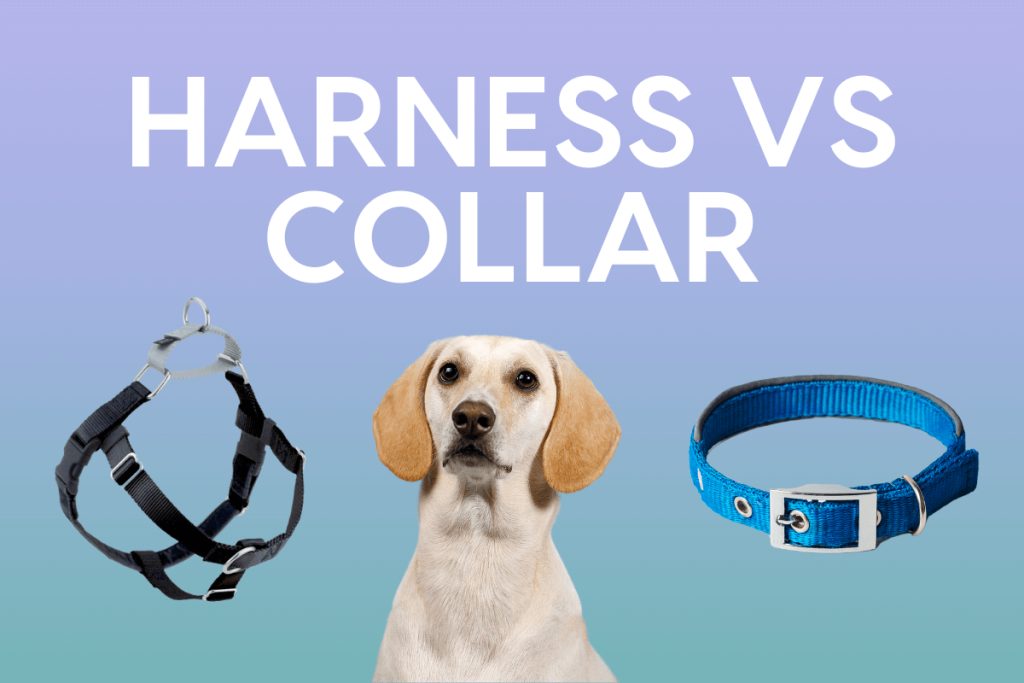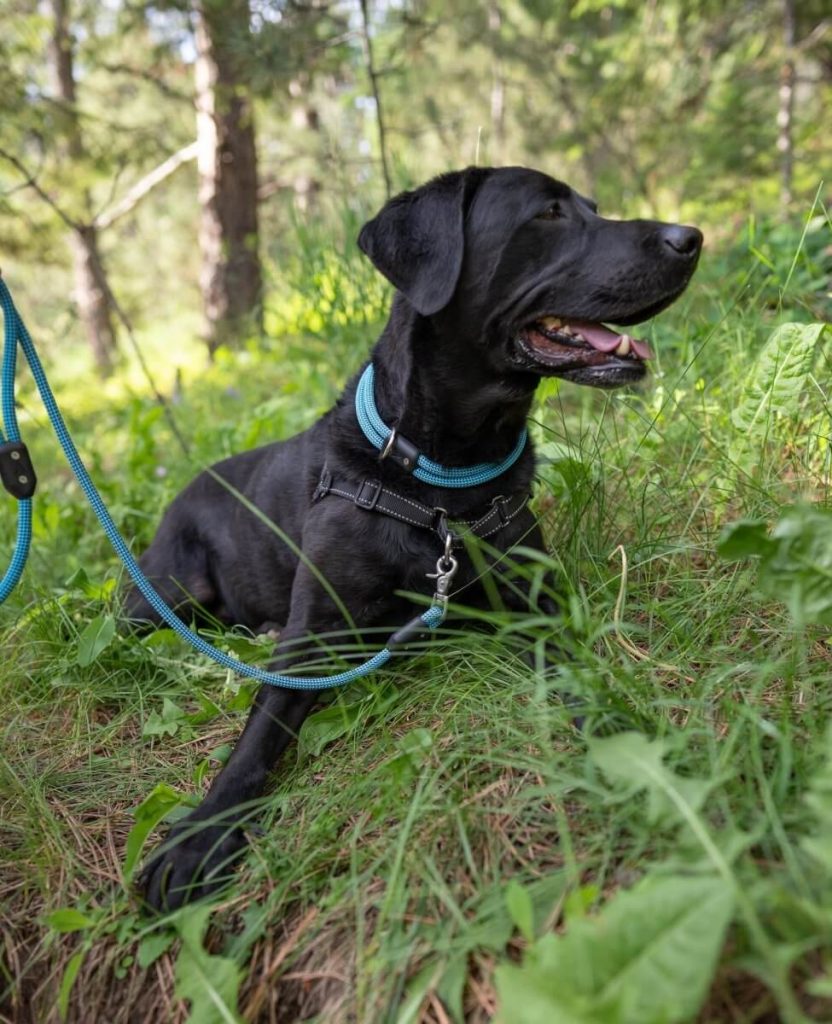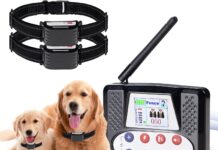We are looking for the best way to control your furry friend. Look no further! This article explores the age-old question: is it easier to control a dog with a harness or collar?
We all want our dogs to be obedient and well-behaved, but finding the proper control method can be challenging. Join us as we delve into the pros and cons of both options, giving you the information you need to make an informed decision for you and your canine companion.
So, buckle up (or, should we say, harness up!) and get ready for some valuable insight into the world of dog control!
This image is the property of blog.omlet.co.uk.
Harness vs Collar – Introduction
Welcome to our comprehensive guide on choosing between a harness and collar for controlling your beloved canine companion! As responsible pet owners, we understand the importance of providing comfort, safety, and practical training tools for our furry friends. This article will delve into the various aspects of harnesses and collars, comparing their features, benefits, and potential drawbacks. By the end, you’ll better understand which option suits your dog’s needs and your personal preferences.
1. Comfort
1.1 Harness
When considering the comfort of your four-legged friend, a harness often comes out on top. Harnesses are designed to distribute pressure more evenly across your dog’s chest and back, reducing the strain on their neck and throat. This can be particularly beneficial for breeds prone to respiratory issues or those with delicate necks, such as small dogs or brachycephalic breeds. Additionally, harnesses come in various sizes, making finding the perfect fit for your pup easier.
1.2 Collar
While collars can be comfortable for some dogs, it’s important to note that they place direct pressure on the neck. This constant pressure can lead to discomfort or even injury for dogs who pull on the leash or have sensitive necks. However, many dogs are accustomed to wearing collars and may feel more at ease with this familiar accessory. Ultimately, it’s essential to assess your dog’s individual needs and preferences to determine whether a collar would suit them.
2. Control and Safety
2.1 Harness
When it comes to control and safety, harnesses offer a distinct advantage. The harness’s design allows for better force distribution, giving you increased control over your dog’s movements. This can be especially helpful when dealing with larger, stronger, or more energetic dogs prone to pulling or lunging. Harnesses often feature additional attachments, such as a front clip, which can help redirect your dog’s attention and discourage unwanted behaviors.
2.2 Collar
Collars, on the other hand, may provide less control in certain situations. Dogs who pull on a collar may be more susceptible to choking or neck injuries, particularly if they have a sensitive throat or a predisposition to respiratory issues. However, for well-trained dogs who walk calmly on a leash, a collar can offer the necessary control without impeding their movements. Consider your dog’s size, strength, and behavior when evaluating whether a collar can provide adequate control and safety.
3. Training Effectiveness
3.1 Harness
Harnesses often prove to be highly effective tools for training dogs, particularly those who need guidance in proper leash manners. The harness design allows for better leverage, making it easier to redirect your dog’s attention, discourage pulling, and encourage preferred behaviors. Additionally, some harnesses come with a handle on the back, providing extra control during training sessions or in challenging situations.
3.2 Collar
Collars can also be effective for training, especially with well-behaved dogs who have mastered basic leash manners. However, it’s important to note that using a collar for corrections or training methods that involve leash pressure may not be suitable for all dogs. It’s crucial to employ positive reinforcement techniques and consult a professional trainer to ensure the methods you use with a collar are practical and humane.
This image is the property of pupford.b-cdn.net.
4. Pulling Behavior
4.1 Harness
A harness can be a game-changer if your furry friend tends to pull on walks. The harness design helps distribute the pulling force more evenly across your dog’s body, minimizing strain on their neck and throat. This reduces the discomfort your dog may experience and gives you better control over their pulling behavior. Harnesses with front clips are particularly effective in discouraging pulling as the leash attachment redirects their forward momentum.
4.2 Collar
When addressing pulling behavior, collars may offer less control and effectiveness. The direct pressure on the neck can encourage dogs to pull harder or exacerbate their pulling habits. While specific collar designs, such as martingales or slip collars, can help reduce pulling, they should only be used under the guidance of a professional trainer to ensure they are used correctly and safely.
5. Behavior Modification
5.1 Harness
Harnesses can serve as valuable tools for behavior modification, particularly when discouraging reactive or aggressive behavior. The ability to redirect your dog’s attention and exert control through even pressure distribution makes harnesses a popular choice for behaviorists and trainers. Additionally, specific harnesses, like those with a front clip, help discourage lunging or pulling, promoting improved leash manners and a calmer walking experience.
5.2 Collar
Collars can also be helpful for behavior modification, mainly when working with well-trained dogs who respond to gentle leash corrections. However, it’s vital to use positive reinforcement techniques alongside collar training to ensure the focus remains on encouraging positive behaviors rather than punishing undesirable ones. Always consult a professional to determine the most appropriate training tools and methods for your dog.
This image is the property of i.insider.com.
6. Physical Considerations
6.1 Harness
For dogs with specific physical considerations, such as those recovering from injuries or surgeries, harnesses are often the preferred choice. The even distribution of pressure and the ability to attach leashes at various points allows for better support and reduced strain on specific body parts. Furthermore, harnesses can provide extra stability for older dogs or breeds prone to hip dysplasia or arthritis, making their walks more comfortable and enjoyable.
6.2 Collar
While collars may not offer the same physical support as harnesses, they can still be appropriate for many dogs without underlying physical conditions. However, it’s crucial to monitor your dog for any signs of discomfort or strain, particularly if they have a delicate neck or are prone to respiratory issues. When in doubt, consult your veterinarian to determine whether a collar is the right choice for your dog’s physical needs.
7. Overall Versatility
7.1 Harness
Harnesses often offer greater versatility compared to collars. They can be used for walks, training sessions, and even during various sporting activities such as hiking or agility training. The availability of different harness styles, such as back-clip, front-clip, or dual-clip, allows you to tailor the harness to your specific needs and training goals. This versatility makes harnesses popular for dog owners who want a single tool that can cater to multiple activities.
7.2 Collar
While collars may not offer the same level of versatility as harnesses, they still have their place in certain situations. Collars are generally preferred for everyday use for well-trained dogs who don’t exhibit pulling or reactive behaviors. They are simple, lightweight, and easy to put on and take off, making them ideal for quick walks around the neighborhood or casual outings.
This image is the property of www.thesprucepets.com.
8. Potential Discomfort or Harm
8.1 Harness
When it comes to potential discomfort or harm, properly fitting harnesses generally pose minimal risks to dogs. However, regularly inspecting the harness for any signs of wear, damage, or discomfort, such as chafing or rubbing, is essential. Additionally, some harnesses may not fit all body types properly, potentially leading to discomfort or restriction of movement. Always choose a harness appropriate for your dog’s size, breed, and specific needs to minimize the risk of discomfort or harm.
8.2 Collar
While collars can be comfortable for many dogs, they pose a higher risk of potential harm if misused or if the dog engages in excessive pulling or lunging. Choking, tracheal damage, or neck injuries are potential risks associated with collars, particularly for breeds with delicate necks or respiratory issues. Choosing a well-fitted collar with appropriate width and materials can help minimize these risks. Still, it’s crucial to regularly inspect the collar for signs of wear and ensure it is used correctly and safely.
9. Conclusion
After exploring the various aspects of harnesses and collars, we hope you now understand which option is best suited for controlling and training your beloved canine companion. Harnesses offer enhanced comfort, control, and versatility, making them ideal for dogs prone to pulling with behavioral concerns or specific physical considerations.
On the other hand, collars can be suitable for well-trained dogs who require minimal control or support during their walks. Consider your dog’s needs, consult with professionals if necessary, and prioritize their comfort and safety when making your choice.
This image is the property of atlaspetcompany.com.













































